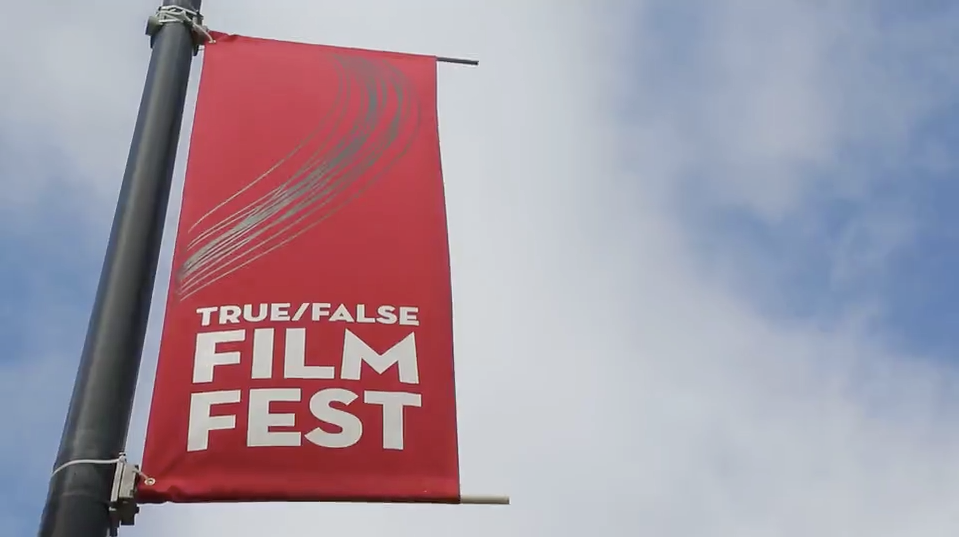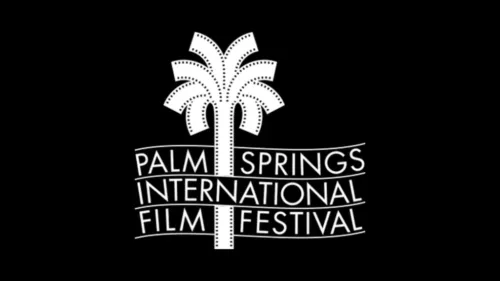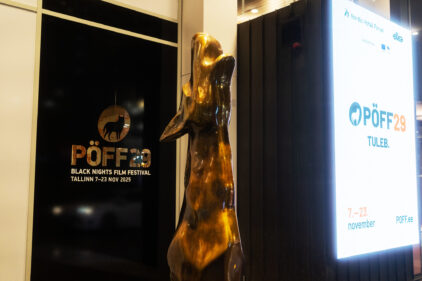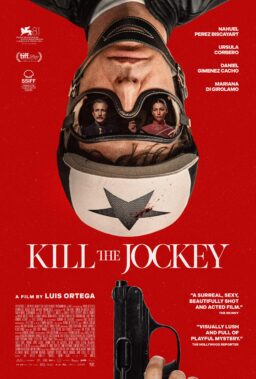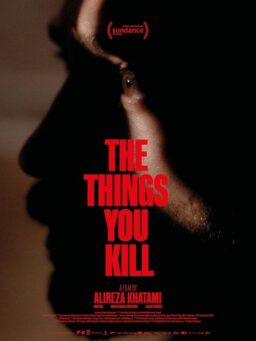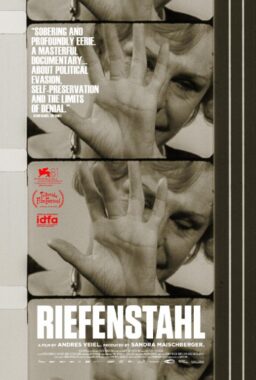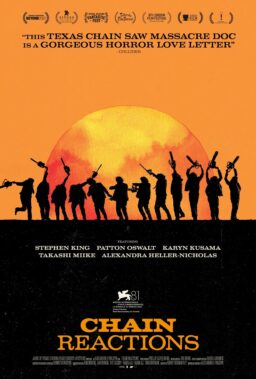As a first-timer at True/False, everything is a discovery—the films, the sights, the food, and especially the people. For four days, the town of Columbia, Missouri becomes the hub of creative non-fiction, a place where artists, citizens, and everyone in between gather to share in exciting new visions from around the globe. Without a strong industry presence, True/False primarily exists as a sanctuary from the more economically perverse elements of the film medium, a place for exposure, experience, and enlightenment. To call it a “utopia” would be more than a little hyperbolic, but to this outsider, it’s like a haven for people desperate to avoid the pressures of the outside world while simultaneously gaining perspective on that world as well. In other words, it’s a laboratory where the burden is on understanding and less on competition or even achievement.
It would be remiss of me not to mention the particulars of Columbia itself since it’s the type of environment where something as special as True/False can flourish. Though my alma mater was technically located in a town, it was more of a small village that primarily existed as a small appendage of the actual college, at least from the perspective of the students. In contrast, Columbia is a “college town” in every sense of the phrase: easily navigable and filled with the usual signifiers—coffee shops, bars, eateries, a seemingly endless coterie of distractions from the pressures of the university despite its small geographical size. Yet it brims with ineffable integrity; it feels familiar, very much the mental picture of a college town without the typical East Coast connotations, but entirely unique at the same time.
As such, there’s a higher education bent to the whole affair that cannot and shouldn’t be ignored. Yes, it’s still technically a film festival, complete with all the characteristic attributes of such an event, but True/False feels more like an extended collegial exchange. That’s partially because the “conversation” continues long after the films and Q&As are over, well into the night at various social functions around town. However, it also seems to be the very nature of the festival to provoke thought without being blandly “thought provoking,” similar to how the best classes in college would keep kids awake at all hours discussing the material. The purveyors of the festival are of similar mind but with few overlapping perspectives making it an ideal place for this level of engagement.
I saw 10 films at the festival, and though my personal opinions on them obviously vary, the movies all basically stayed with me, a rare feat to say the least. None of them scanned as impersonal, and while I will continue to kick myself for missing a couple key titles due to timing mishaps on my part—mainly Guido Hendrikx’s “Stranger in Paradise” and Dmitrii Kalashnikov’s “The Road Movie”—I don’t regret any of the films I chose to see. It’s a testament to the festival’s programming, courtesy of Chris Boeckmann and Abby Sun, that this is the case. Let’s break them down, shall we?

I began and ended the festival with two observational portraits: Viktor Jakovleski’s “Brimstone & Glory,” about an annual fireworks festival in Tultepec, Mexico, and Sompot Chidgasornpongse’s “Railway Sleepers,” about the lives of the myriad people who ride the Thai railway system. The two films complement each other quite well: The former features a dazzling display of light and sound while the latter luxuriates in the quiet, contemplative moments too rarely seen on screen.
“Brimstone & Glory” is at its best when it focuses purely on the spectacle; Jakovleski frequently places the audience in the middle of the action as Tultepec residents experience the light show from a dangerously close range (many suffer horrific injuries and burns each year). The film is less successful when it sentimentally leans on its actors, specifically a small child that Jakovleski follows through the event and the days leading up to it, and Dan Romer and Benh Zeitlin’s heavy-handed score that needlessly tries too hard to communicate an otherwise banal conception of “beauty.” The actual presentation of the fireworks in the second half features some remarkable shots, especially in the “Burning of the Bulls” section in which big paper bulls are lit on fire, but even at a brisk 64 minutes, these are too few and far between.
“Railway Sleepers” fares better mostly because Sompot maintains a muted, pensive tone as he surveys the numerous figures that pass through the rails. Shot over the course of eight years but constructed to simulate a two-day journey, Sompot captures small conversations between schoolchildren, tourists, food sellers, etc. from a distance, providing them the necessary privacy to be most comfortable without actively “performing.” Sompot has previously worked as an assistant director on a few of Apichatpong Weerasethakul’s projects and it shows, especially in the somewhat oneiric approach to his subjects. Though “Railway Sleepers”‘ attempts to connect the small gestures of strangers with the larger history of the railway system often feel a bit forced, it’s overall a gentle feature about the soft grace notes that occur in transit.
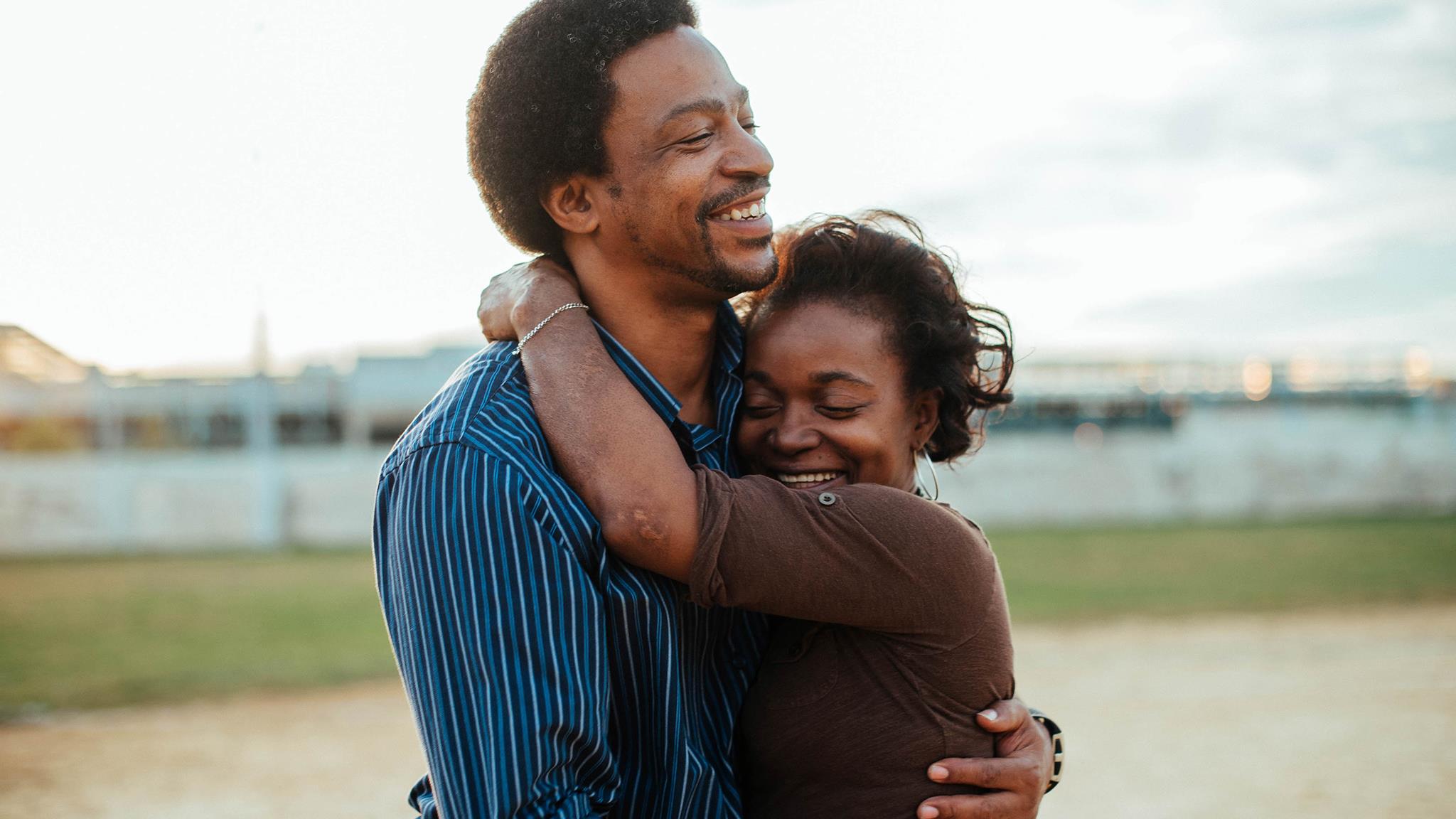
Both Jeff Unay’s “The Cage Fighter” and Jonathan Olshefski’s “Quest” deal with American families in some degree of crisis, but one is because of a patriarch’s relentless pursuit to be a champion and the other is due to the everyday hazards of living in an urban environment plagued by violence and poverty.
Easily the weakest film I saw at the festival, “The Cage Fighter” follows 40-year-old MMA fighter Joe Carman as he struggles to eek out one more match while balancing the pressures of his family, the two of which are obviously incompatible. Unay approaches the subject matter in the most “Rocky”-esque way, complete with the requisite clichés and standard dramatic arcs. Though it features a few winning scenes, particularly near the beginning when we know little about Joe and it isn’t clear where exactly the film is headed, “The Cage Fighter” touches too many of the sports film hazards to rise above the middle of the road.
Editor Brian Tallerico already covered “Quest” when it premiered at Sundance, so I won’t spend too much time on it, but suffice it to say that Olshefski’s film is a captivating, moving portrait of a family desperate to hold on to their community, stay strong amidst political strife, and contend with the traumas and tragedies that occur in America. I’ll point out two things that particularly impressed me: First, Olshefski’s staunch refusal to define both the Rainey family and their North Philadelphia community purely through pain, instead offering numerous moving scenes of intimacy and togetherness in the neighborhood; and second, his resistance to overlay any sort of ham-fisted dramatic arc, political or otherwise, over the family through the eight years of the Obama administration, preferring just to follow them as they age and mature without the burden of a cosine graph narrative structure.
Yance Ford’s “Strong Island” and Travis Wilkerson’s theatrical performance piece “Did You Wonder Who Fired the Gun?” are the two most directly in conversation with each other at the festival. Both deal with the directors’ racially motivated murders in the family history, but from opposite sides of the color divide: “Strong Island” follows Ford’s inquiry into the death of his brother in 1992 by a white male, a horrific crime that never even received a trial, while “Did You Wonder Who Fired the Gun?” follows Wilkerson’s interrogation into his great-grandfather’s cold-blooded murder of a black man in Dothan, Alabama as well as the disturbing history of racism that still enervates within his family.
“Strong Island” certainly presents an affecting story; Ford, his family, and the key participants in the tragedy offer compelling insights into the human effects of institutional racism as well as long-term familial grief, not to mention the all-too-common miscarriage of justice when it comes to the deaths of unarmed black men. However, the film is too structurally amorphous to pack the punch that it theoretically should. Ford jumps around between the murder, the family’s history in Long Island, the personal story of his brother’s life, and by the end, there are just one too many disjointed narrative strands that needlessly complicate an already messy tale. The lack of cohesion coupled with certain formal conceits, such as extreme close-ups and frequent theatrical blackouts, render this a film that strains too frequently for meaning, especially when the bare-bones story is already arresting on its own.
With “Did You Wonder Who Fired the Gun?,” Wilkerson takes us on a journey through the most nefarious parts of his family history, peeling back layers and layers of ugly, virulent racism that run from the early 20th century through the present day. It’s undeniably powerful to witness Wilkerson’s palpable shame and rage on stage as he documents his journey into the depths of his own heritage, excoriating his bloodline and expressing guilt at his family’s actions. But while Wilkerson’s intentions are admirable, his execution of the project isn’t completely clean, especially when it comes to actually communicating his enlightened feelings. On some level, this is by design, but it nevertheless leads to a handful of cringe-worthy moments, and his insistence that the project is a “white nightmare story” doesn’t always provide sufficient cover. (There’s a specific moment where he invokes Nina Simone’s “Strange Fruit” that literally made my full face wince.) Wilkerson isn’t being disingenuous in his emotions or approach, but some of the moves on display feel too forced to be truly effective, especially when they’re juxtaposed next to others that are above board. This is the one film I feel most conflicted about. On one hand, I’m not sure I should judge an individual’s personal, politically motivated expression, but on the other hand, I can’t lie and say that there weren’t times when it made me feel uncomfortable outside the scope of Wilkerson’s perceived intentions. With that being said, “Did You Wonder Who Fired the Gun?” was one of the very best things I saw at the festival precisely because it got under my skin.

Florent Vassault’s “Lindy Lou, Juror Number 2” and Kitty Green’s “Casting JonBenet” both tackle real-life murder cases with very different approaches: “Lindy Lou, Juror Number 2” follows the eponymous juror’s road trip around Mississippi as she tracks down her fellow members to discuss the murder case on which they served, while “Casting JonBenet” tackles the famous JonBenet Ramsay murder case through interviews with actors auditioning for roles in a fictional film based on the events.
“Lindy Lou, Juror Number 2” is the more straightforward project as Vassault simply shadows Lindy Lou on her journey to examine her own haunted feelings around sentencing a man to death by seeing if others feel the same way. An unintentionally strong argument against the mere concept of jury trials, the film examines the wide range of opinions on the death penalty quite well, but it adopts a fairly repetitive structure that quickly becomes tedious. Lou travels from door to door and surveys the landscape of her fellow jury members. Some feel guilty about what they did, others don’t, and one weirdly doesn’t remember much of the trial, prompting Lou to monologue about the selfishness of most people. Vassault is empathetic towards all parties involved, even if he occasionally leans too much on a casually stereotypical depiction of Southern milieu, but the pacing and cutting patterns render it a bit of a bore.
“Casting JonBenet” couldn’t be more different, with its experimental central conceit as an indirect way to examine a host of issues surrounding the Ramsay case—domestic violence, media manipulation, small town conspiracies, the whole nine yards. Green takes the concept as far as she can go, even if it occasionally feels limiting and patchy, but the film is consistently entertaining, and it was a real treat to see it in a packed theater. The interviews themselves are fairly compelling; they range from outrageously funny, in an early Errol Morris sort of way, to solemn and disturbing, often turning on a dime. Green splices in scenes from the fictional film that scan as generally Fincher-esque, which I suppose is the point; these didn’t do much for me, but it does lead to a swing-for-the-fences payoff at the end, which is unfortunately more compelling in theory than in practice. The film will likely garner plenty of attention, debate, and multiple rounds of acclaim and backlash when it premieres on Netflix at the end of April, so watch out for that.
If I’m unfairly mixed on Claire Simon’s “The Graduation,” a behind-the-scenes study of the rigorous entrance exam to the prestigious, highly selective French film school La Fémis, it’s only because I spent much of the two-hour feature straining to see the subtitles, as I had a terrible seat in Columbia’s Blue Note theater. I eventually moved to the very back and stood for 90 minutes just to see what people were saying, and trust me, this isn’t a film that you could get by on visual language alone. Despite those difficulties, I mostly enjoyed this portrait of an institution obsessed with its reputation (it’s produced such legends as Alain Resnais, Louis Malle, and Claire Denis), but also near-constantly criticizing it, with the understated fear that it’s both too stodgy and not stodgy enough. There are a couple scenes featuring spirited faculty debates that are utterly brilliant, including one about an arrogant student that prompts someone to eventually shout one of my favorite lines of dialogue of 2017 so far on his behalf: “I’m sure if [Carl Theodor] Dreyer was in an oral, he wouldn’t be a bundle of joy either!” The film definitely drags in certain sections and never quite reaches that Wiseman-esque balance of scope and depth, but it’s entirely possible I change my mind about this if or when I see the film again with a clearer line of sight.

Finally, there’s Theo Anthony’s “Rat Film,” far and away my favorite film at True/False and the one that I’m most eager for others to eventually see. Part warped essay film and part traditional documentary, “Rat Film” explores the history of Baltimore, most prominently the city’s urban planning, through its rat population and the human beings who engage with them. Guided by an alien-like narrator (think HAL but with a shade more warmth in the voice, which oddly enough makes her creepier than HAL), the film essentially barrages the viewer with vignettes and variations on its central thesis, that a city government historically views and treats its weakest, most powerless citizens similarly to the way scientist treat lab rats. However, that description does a disservice to the experience of actually watching Anthony’s film. On paper, “rats = humans” sounds like a fairly reductive idea, and the well-research sociological inquiry isn’t breaking new ground or anything, but the way Anthony organizes and conveys the information, with much-needed help from Dan Deacon’s unsettling dissonant score, truly astounds. Formally kinetic, profoundly energetic, and chillingly dystopic, “Rat Film” succeeds on the basis of its ambition and provocative nature. Not every strand connects as well as it should, and the ending is very much a “your mileage may vary” kind of deal, but in terms of a vision that connected with my very core, “Rat Film” stands high above the rest.

